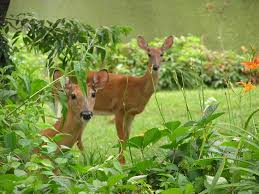|

Why hire a Landscaper?
While anyone can dig a hole and put a plant in it, not everyone is blessed with the proverbial “green thumb” necessary to make those plants grow up strong, healthy and beautiful in your garden. In fact, it’s very possible that without research, the plants may have been positioned incorrectly for the maximum benefit of sun, shade and light positioning in your yard or garden.
Sometimes what we think may work is not always the case. A commercial landscaper will know what is right based on climate, shade or sunny, soil charactertics. A commercial landscaper may actually save money for you by planting the right plants for the location and not just guessing what is right. A professional is knowledgable about the best and most attractive plants for your area as well as the best tricks and tips of the trade to make the plants look amazing in your space.
Often, creating something astonishing means you must go beyond just planting greenery. A commercial landscaper is also adept with stonework, water features and other distinctive aspects necessary to turn your yard into a true showpiece.
Spring is just around the corner – call Landscape Associates to help you turn your lawn into a showpiece!

Don’t forget….!
The colder weather is the perfect time to get out in the garden. This may not be the ideal season to clip flowers, but it the ideal time to clean up your garden and landscape beds to prepare for the spring and summer months.
Start your clean-up efforts by clearing out any overgrown areas or weeds. Clear out dead branches and plants – being careful not to throw out perennials that will bounce back in the spring. Trim down your bushes and other non-blooming plants using a trimmer or clippers. Be sure to shape the hedges so that the sun can reach the lowest branches to avoid spots or bald areas.
Then, finally tackle your trees and ornamental plants by pruning these plants to clear away over growth, unattractive areas and to shape the plant overall. Be mindful, however, not to prune any early spring-blooming plants like azaleas or lilac as you may prune away your blossoms and hurt the plant. Wait until after they bloom to prune.
Call LAI to schedule your final winter clean up and get ready for spring!

Start preparing now for spring!
While you might look out the window and see the grays and rain of winter, you should be thinking about color, and lots of it. This is the perfect season to start planning your garden for spring, and if you’re interested in color early in the spring, this is the month to start turning over the soil and planting bulbs.
To prepare your garden beds for the spring, you’ll need to do a bit of work first. Clean up the beds by pruning existing plants wisely. Then, turn over the soil and work in fertilizer or compost. If your soil is not ideally balanced for your favorite plants, you may also need to add specific types of fertilizer to add or decrease the pH balance.
Finally, once your soil is soft and ready – even if it’s still cold – start digging for bulbs. Be sure to plant the bulbs for flowers like lily or crocus 5 – 6 inches below the surface of the soil with the tip of the bulb pointing up. You’ll start seeing green shoots about six weeks later.
Landscape Associates can take care of all your spring garden projects and help plan for a stunning lawn this summer. Call us today!
|
Pest of the Month: Deer

They are cute and movies have been made about them. However, deer are some of the largest pests in a garden due to their size and current population levels. Deer are persistent, and they are able to do quite a bit of damage to succulent new plants in a short amount of time. Deer enjoy grazing, and they do not see the distinction between your garden and their typical habitat in the nearby trees. In fact, they likely prefer your garden since there is more variety and the plants are especially tender.
Many home owners (often those without extensive gardens) encourage deer on their properties as they are attractive animals to watch. This can prove to be especially challenging for neighbors who do not enjoy visiting deer as the deer make no distinction between homes. There are two options available to prevent deer in the garden. The first is to plant items that naturally repel or are unappealing to deer like yarrow or sagebrush. The second option is to deter deer from entering your garden completely.
Deterring deer can be as simple as putting up a fence around your garden. There are also many different commercial and homemade deer repellents gardeners use to scare away the deer or offend their sense of smell. Finally, the sound of a dog barking or other “human” noises like a radio playing may be the ticket to getting the deer away from your hard work.
Landscape Associates has the tools and products to help keep deer and other pests from your garden. Give us a call today!

Pork Carnitas
(recipe adapted from Cooks Illustrated)
4 pound boneless pork butt, fat trimmed and cut into 2 inch cubes
1 1/2 tsp salt
3/4 tsp pepper
1 tsp ground cumin
1 onion, peeled and halved
2 bay leaves
1 tsp dried oregano
2 Tb fresh lime juice
2 C water
1 medium orange, juiced and keep the spent halves
1. Adjust oven rack to lower middle position and heat to 300 degrees. Combine all the ingredients in a large Dutch oven, including the spent orange halves and juice. Bring the mixture to a simmer over medium-high heat, uncovered. Once it simmers, cover pot and transfer it to the oven. Cook until the meat falls apart when prodded with a fork, about 2 hours.
2. Remove the pot from the oven and turn on the broiler. Use a slotted spoon to remove the meat from the pan and place it on a large foil-lined jelly roll pan. Remove and discard everything from the pot except for the cooking liquid. Place pot over high heat on the stove and boil until thick and syrupy, about 20 minutes. You should have about 1 C of liquid remaining when it is finished.
3. While the liquid is reducing, use two forks to pull each cube of pork into three equal sized pieces. Once the liquid has become a syrup, gently fold in the pieces of pork into the pot. Try not to break up the pork any further. Taste and add additional salt and pepper.
4. Spread the pork back onto the foil lined pan and evenly spread the meat around so there is a single layer of meat. Place the jelly roll pan on the lower middle rack of the oven and broil until the top of the meat is well browned and edges are slightly crisp, about 5 to 8 minutes. Using a wide metal spatula, flip the pieces of meat and broil the other side until well browned and edges are slightly crisp, 5 to 8 minutes. Serve immediately in a tortilla with all your favorite toppings.
(Thank you My Kitchen Escapedes.)
|
